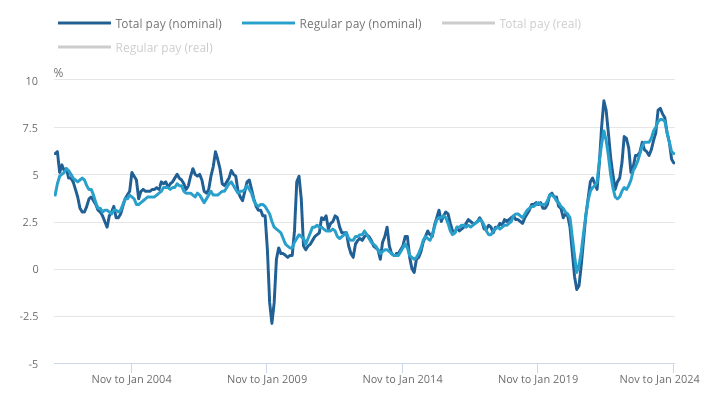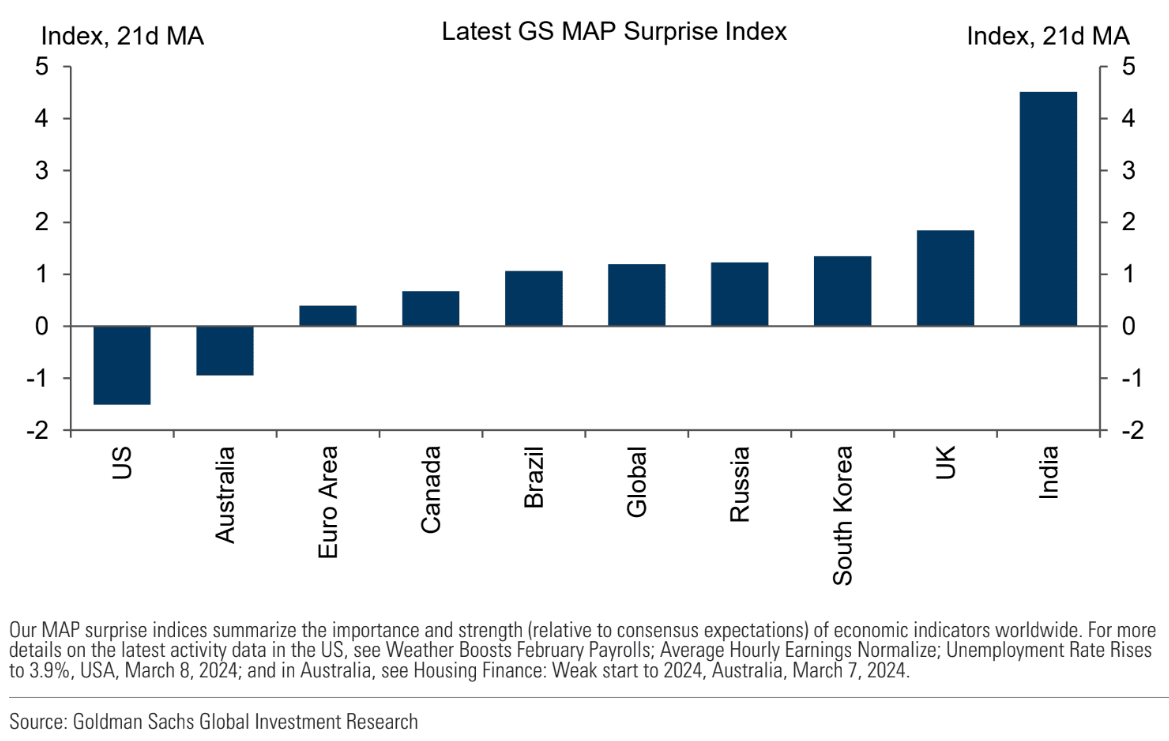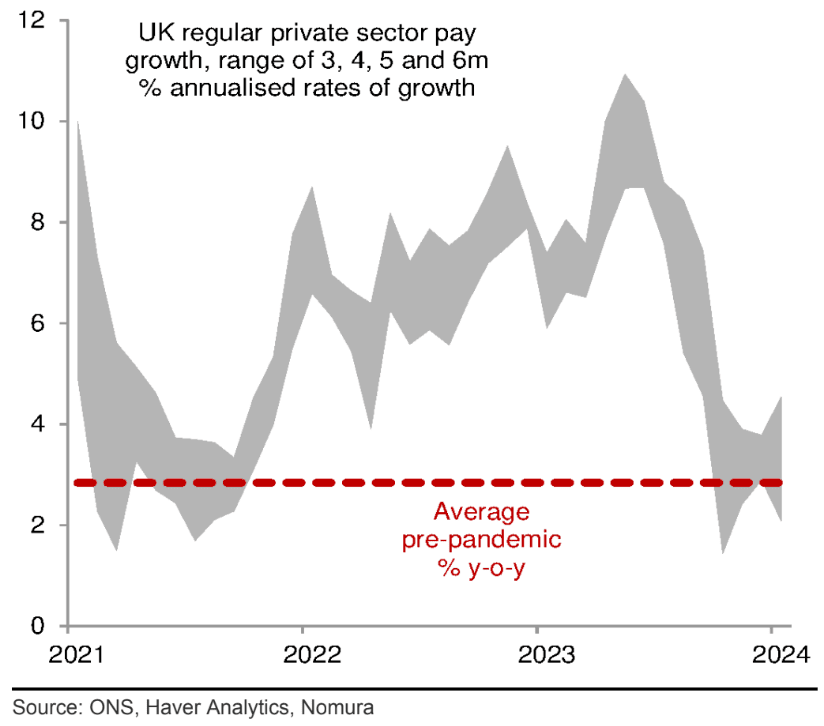Pound Under Pressure Following Soft Wage Outturn
- Written by: Gary Howes
-

Image © Adobe Stock
UK wage and employment data undershot market expectations, boosting the odds of a June rate cut at the Bank of England and resulting in a broadly weaker British Pound.
The Pound to Euro exchange rate extended the current week's decline to 1.1708 after the ONS said average earnings, with bonuses included, rose 5.6% in January, which was softer than the 5.7% expected and below December's 5.8%. The exchange rate had been as high as 1.1750 early on Monday.
When bonuses are excluded, average earnings rose 6.1%, down on the 6.2% of December, which was also the level the market consensus expected.
The Pound to Dollar exchange rate was also softer, trading at 1.28 in the wake of the data release.
"GBP has been the best performing G10 currency so far in this quarter, but the resilience of sterling will be tested with much of the good news now priced in and wage pressures starting to top out," says Charu Chanana, Head of FX Strategy at Saxo Bank.
Live GBP/EUR Money Transfer Exchange Rate Checker | ||
Live Market Rate: | get quick quote | |
Corpay: | ||
Banks: Median Low | ||
Banks: Median High | ||
These data are based on the spread surveyed in a recent survey conducted for Pound Sterling Live by The Money Cloud. | ||
The ONS reported that the unemployment rate unexpectedly rose to 3.9% in January from December's 3.8%, as employment fell 21k in the three months to January compared to the three months to November.
The estimated number of vacancies in the UK fell by 43K in the three months to February to 908K; however, the number of vacancies still remains above pre-Covid levels.
UK wages remain too high to be consistent with the Bank of England's aim of achieving 2.0% inflation on a sustainable basis, but the trend is clear. Falling vacancies and a rising unemployment rate suggest an ongoing process of labour market loosening that will exert further downward pressure on wages, allowing the Bank of England to cut rates in the summer.
The Pound can come under pressure if upcoming data raise the odds of a June interest rate hike.
"The easing in wage growth in January is probably still a bit too slow for the Bank of England’s liking. But there are encouraging signs that a more marked slowdown is just around the corner and that an interest rate cut in June is possible," says Paul Dales, Chief UK Economist at Capital Economics.
Above: Global Activity Data Surprise to the Upside in the UK according to Goldman Sachs. The surprising upturn in the UK has underpinned the Pound in 2024.
However, Kyle Chapman, FX Markets Analyst at Ballinger Group, says the decline in wage growth is encouraging "but certainly not a victory for the Bank of England", which will still be looking for a cautious approach to cutting interest rates.
"Slowing vacancies is a clear sign that the labour market is heading in the right direction. But for us, this report broadly confirms again that worries about inflationary persistence are not unfounded. The August cut will require a turning point in the data that we are yet to see," he says.
Although the Pound trades softer in the wake of these data, the downside should be limited, and we expect the currency to maintain its status as one of 2024's best performers in G10.
Above: Annualising the most recent wage reports shows a clear trend of decline. Image courtesy of Nomura.
"One report doesn’t make a trend, and this sets up next month’s labour market report to be a particularly important one, coming shortly before the Bank of England’s new forecasts in its May Monetary Policy Report," says George Buckley, Chief European Economist at Nomura.
Economist James Smith at ING says the Bank of England will cut rates in August, which would mean it will cut after the European Central Bank and U.S. Federal Reserve, based on current market expectations. In a FX world where the timing of rate cuts matters, this can ensure the Pound remains supported against the Euro and Dollar.
Smith says the National Living Wage will increase by close to 10% again in April, and while this is unlikely to have a huge impact on the wider pay numbers, "we suspect the Bank will want to see some data on it before acting".
"It's a similar story with services inflation, another key metric for the Bank. Last year, we saw huge price rises in the second quarter, in many cases linked to annual contractual increases which are typically based on prior rates of headline CPI. While this effect should be more muted this year, the Bank won’t want to second guess it," he adds.
ING thinks the Bank will also want to see the April and May CPI reports, the latter of which will be available at the June meeting.
So in all, while these data lean slightly bearish for Pound Sterling, they are by no means a trend killer.
"I do not think that the slowdown in wage growth and the rise in unemployment today may modify expectations about the possibility of cutting the interest rate for the first time in August at least, and by a total of 75 basis points throughout the entire year. The markets' limited response to today's data reinforces this hypothesis as well," says Samer Hasn, Market Analyst at XS.com.






